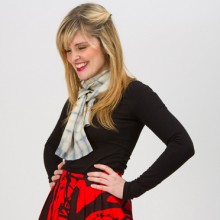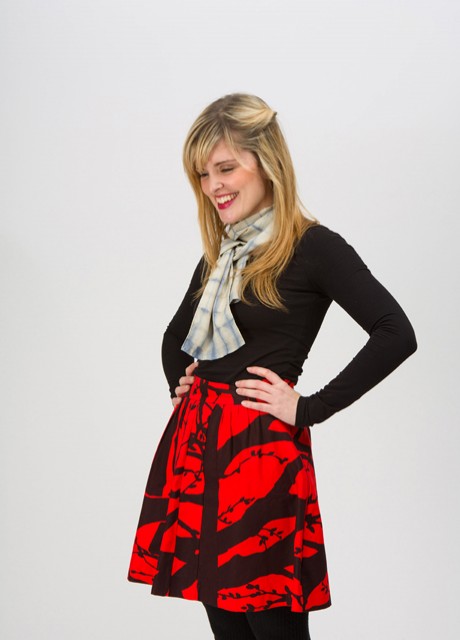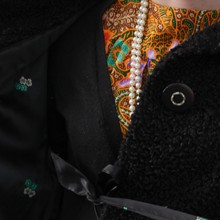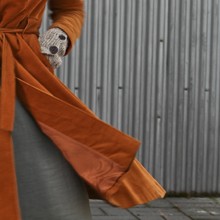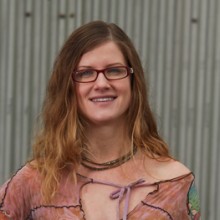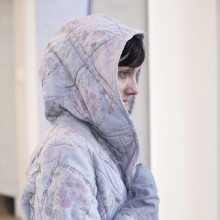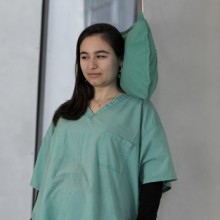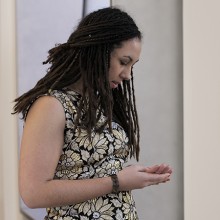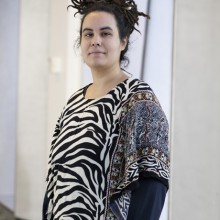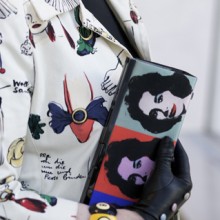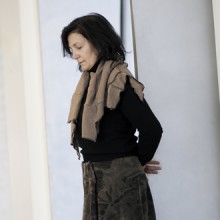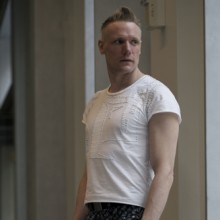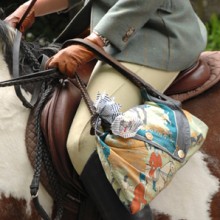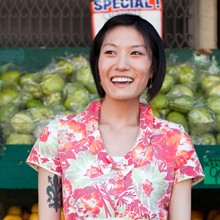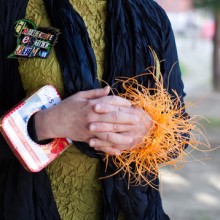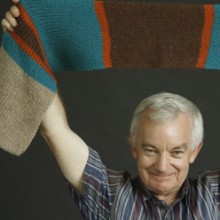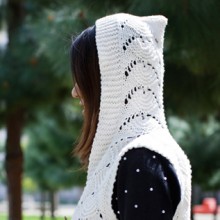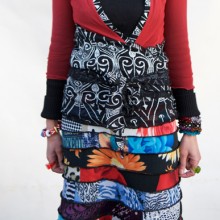
Material resourcefulness
Garments are fusions of materials and energy brought to the body in myriad configurations, yet the dominant force in fashion, consumerism, tends to value only a narrow spectrum of fashion activity. The practices of material resourcefulness broaden this view and show a burgeoning testing ground of an alternative flows of fibre, fabric and product.
Low cost: a licence to alter
“So my garment is a skirt and it’s something that I made myself. I try to buy vintage used garments but often times they come from thrift shops as vintage shops are out of my budget often times. But there’s one of my favourite vintage shops in Portland where I lived right after I finished my undergraduate degree. I would peruse it at least once a week just to go and browse and but I actually bought something there one time.
It was a 1970s vintage, I guess overcoat, but really thin cotton. And I just really loved the print. The style of it wasn’t the most flattering. And I probably tried to alter it at least four times, different permutations of taking in the waist, shortening it, shortening the sleeves, changing the collar and it never really felt correct. It never really suited me and so it hung in my closet for a few years. And then I finally just cut it up and made it separate, so a top and a skirt. And the skirt has since become one of my favourite garments.
You know, garments that are expensive I don’t really do much with [restyling, alterations]. Because I feel like the justification to charge the amount for that means that it has been crafted, and there has been a lot of work that has gone into it so I haven’t necessarily felt like yeah, I haven’t had the licence to do it.”
London - December 2012
Photograph by
Tim Mitchell






